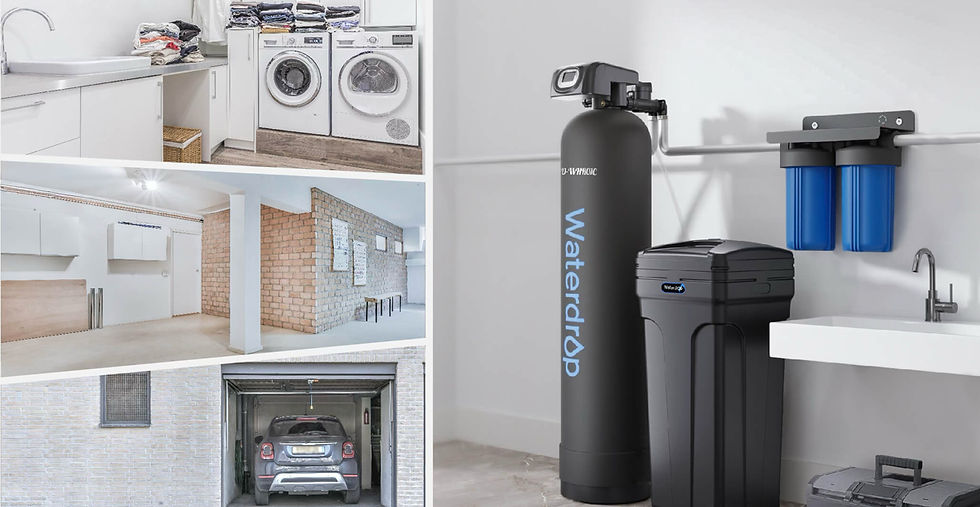7 signs you have hard water and what to do about it
- Brian Harm
.jpg/v1/fill/w_320,h_320/file.jpg)
- Mar 3, 2020
- 3 min read
Updated: Feb 18

Clear and clean water is essential to a happy and healthy home. Most people view water as a naturally pure substance. However, water quality and composition can vary greatly according to where people live, even if you can’t see it.
Yes, water has a simple molecular composition, but it can contain other elements. This is called hard water. The potable water supplied to homes can carry mineral elements. This is true even after treatments by municipal water plants, and the best private well filters. These elements are typically safe to drink, but they can cause problems to the home and belongings. The good news, is that hard water is very common to diagnose and treat. Check out these several ways to tell if your home has hard water:
Changes in Family Member Health
When trace minerals accompany drinking water, it can result in some pesky health issues. Some people will develop rashes because of an allergic reaction to minerals like iron. Rashes, and other changes like dry and itchy skin are good reasons to have your water tested. Again, most people can safely digest water that is hard.
Ruddy and Rusty Stains Appearing in Strange Places
When condensation and seepage from a home’s water system penetrates a surface, it can leave a noticeable stain pattern. Homes with water having a high mineral content will have stains near sink seals, refrigerator and washing machine outlets, toilet bowls, and spigot ends. Sometimes, water that is very hard will stain human teeth. Instead of a yellowish, plaque-like appearance, teeth can begin to develop a rust color.
The Water Isn’t Putrid, It’s just Hard!
Water containing certain minerals like sulfur will emit strange smells. It could also taste bitter. Sulfur has the scent and taste similar to rotten eggs. Even the air that is trapped in pipes will smell bad. While this is not normally dangerous, it can make brushing teeth, washing hands, bathing, and other water use very unpleasant.
Minerals Result in Expensive Fixes
Pipes along a home’s water supply route will corrode very quickly if there are many minerals present. The lifespans of iron pipes will be severely compromised because of water that is hard. Even black ABS piping will clog quickly because of deposits. Major damage can also happen if corrosion starts in pipes that are within a home’s walls. If you are constantly calling a plumber because of corrosion, your water is probably very hard.
Keep an Eye on that Expensive Coffee Maker
Water that is filtered through certain appliances will leave mineral deposits. If you notice that appliances are needing repair, it’s a good sign that you are using water that is hard. Discovering various types of hard “flakes” in coffee makers, refrigerator water dispensers, washing machine centrifuges, and on iron cookware is a common sign.
Use Caution When Washing Clothes
Water with a high mineral content tends to turn your entire wardrobe into “delicates.” Some minerals neutralize and coagulate detergents. They can also remain in clothing fibers after several rinse cycles. Constantly dealing with stubborn stains could be due to water hardness issues.
Are You Afraid of Entertaining Guests?
There is nothing like using spotless dishes to set a table for guests. With extra minerals in your water, this could be a difficult thing to achieve. Hard dishwater leaves scaling on dish surfaces that collect soap residue. When this happens, don’t blame your skills as a dishwasher. It could be the water.
This type of system monitors, measures, and filters water to reduce mineral content. Some systems use a specialized salt for water treatment. Other softeners use ionization to neutralize the caustic effects of minerals. If you live in a geographic area that is known for having water that is very hard, getting an estimate for a water softener system installation is great idea. It could be a wonderful investment for home value, health, and minimizing repair costs.






Comments